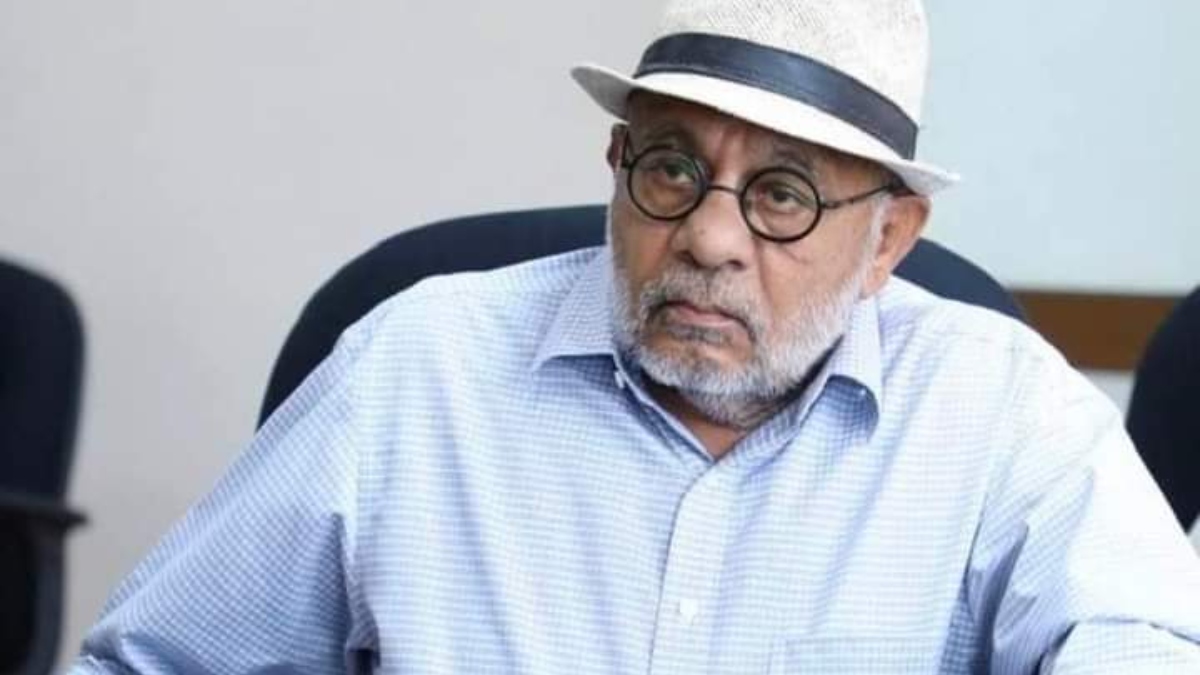Malayalam cinema has never shied away from experiments, both in terms of form and content. One doesn’t have to look too far behind for examples, as the first half of 2024 alone witnessed some daring experiments like , , , and . Experiments usually come at a cost, but the fact that all these films, which either boasted innovative storytelling or visual splendour, have found theatrical success is a huge booster for the entire industry.
Echoing these sentiments is Manju Warrier, whose upcoming release is touted as the first ever found footage film in Malayalam cinema. “The success story of these experiments is hugely inspiring, particularly that of a black-and-white film. Lately, I’ve been nurturing an increasing interest in being part of such films and that’s why I happily hopped on when Saiju (Sreedharan) and Shabna (Mohammed) approached me with this idea.

” marks the maiden directorial of Saiju, an accomplished editor whose works include some landmark films from the last decade, like (2016), (2017), (2019), (2019), and (2019). Saiju is at his unassuming best while sharing when the director bug bit him. “For starters, I didn’t even wish to become an editor, but I was always into films, particularly international cinema, and wanted to attempt something similar here.
Films like The (1984) and (1987) piqued my interest and I used to research about their making. Later, my film institute studies and exposure to the works screened there snowballed into me becoming an editor, and now a director.” For his directorial debut, Saiju says, the germination point was his desire to make ‘something different’, but with a minimal crew.
“I can’t imagine myself handling a big team, so I thought of shooting something different with a phone or a (Sony) A7 camera and that’s when the idea for a found footage film cropped up.” Within its limited framework, Saiju and his co-writer Shabna stuck to their goal of attempting ‘something different.’ While the genre is usually associated with excessive action, horror, and gore, Footage, Saiju says, is closer to life realities.
“The narrative unfolds through an urban couple as we explore their relationship, the lives they see around them, and all the boredom of everyday life. Along with all that, there’s a mystery element as well.” Despite the Malayalam industry being a fertile ground for interesting experiments, it’s still hard to gain people’s trust with fresh concepts, feels Saiju, who had to knock on the doors of several producers before Footage finally got greenlit.
“It was hard convincing people about the feasibility because many were even unaware of such a genre. The concept has been applied in only a few films and the successful ones among them are mostly commercial entertainers. It was Manju chechi who first expressed interest and thankfully, she also decided to produce it.
” The decision to co-produce the film with her was simply to “avoid external interference,” he chuckles. Another big name associated with the film is Anurag Kashyap, and Saiju credits Manju for it. “They have both been friends for long and he got curious when she casually mentioned the film to him.
It was only after seeing the film that he decided to present it.” Found footage films usually feature videos recorded by characters in the story that are later ‘found’ and presented to the audience. The technique demands realistic performances, with actors sometimes handling the camera as well.
It is a unique challenge for any actor, says Manju, as she elaborates on the process. “Since most scenes are video recordings, they had to be single-takes which could not be enhanced with cuts or zooms or even background score. I’ve done films where one or two scenes would be filmed in a single take, but here, almost my entire portions are lengthy, single shots, that too while doing multiple activities like action.
This is the first such experience for me.” “For all of us, in fact,” quips Saiju, while acknowledging his editing expertise in pulling off the film as he envisioned. “The single-takes had to include everything that’s essential to communicating our ideas clearly.
So, the editing process started right from the scripting itself. Now that we look back, there’s hardly anything that was removed. The final duration is almost the same as we planned initially.
” Considering the challenges involved in shooting, the team had to do meticulous planning, including an extensive workshop for over a month. According to Saiju, the rehearsal started much before the shoot as the team had to be familiar with the scene choreography and camera movements. “But it was only much later that we realised that the rehearsal was just a warmup,” laughs Manju, as she recalls the demanding shoot days.
“This film demands a lot of physical strengthening and despite taking all the preps, it was still tough because we had to shoot in real locations, unlike the workshop floor. The scale becomes bigger on sets and with that, the challenges.” marks Manju’s return to Malayalam cinema after a gap of well over a year.
While the actor was immensely popular for her firebrand roles in her first innings, including those in Kanmadam (1998), Pathram (1999), and Kannezhuthi Pottum Thottu (1999), her comeback phase has seen only a few such outings. Strangely, her recent Tamil films—Asuran (2019), Thunivu (2023), and even the upcoming Mr X—see her returning to such spaces. Manju, though, feels it’s “purely coincidental” and not because of the lack of offers from Malayalam.
“It just happened that three interesting roles came on the trot from Tamil, which meant I had to decline a few roles in Malayalam. Moreover, I feel there was a monotony in the ‘female-oriented films’ offered as they all were invariably about a ‘woman fighting injustice’. I’m not saying it’s wrong; there are still some interesting attempts being made.
Footage is one such blessing that has quenched my thirst to experiment.”.



















